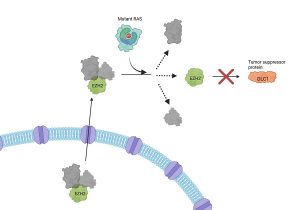New smartphone app quickly analyzes human motion to aid physical rehabilitation

Media Advisory
Thursday, October 19, 2023
NIH-funded researchers suggest app is 25 times faster than current techniques, at a small fraction of the cost.
What
A research team funded by the National Institutes of Health has developed a smart phone app that can track and analyze a person’s ability to move from one place to another, known as locomotion, and other types of movements. Human motion analysis is used to evaluate patients with movement difficulties, to help clinicians plan surgery, and to assess the results of treatment procedures. The research team believes that using the app costs about 1% of conventional motion analysis techniques and works 25 times faster. The study appears in PLOS Computational Biology.
Researchers tested their app, called OpenCap, with 100 participants. Using two or more smart phones, the app recorded sufficient quality videos to allow for web-based, artificial intelligence analysis of muscle activations, joint loads and joint movements. Data collection took 10 hours for the 100 participants, and computation of results took 31 hours. Traditionally, locomotion analysis requires fixed lab space and more than $150,000 worth of equipment, including eight or more specialized cameras to capture three-dimensional images. The captured data also takes several days to analyze by a trained expert.
While current technology is too expensive for routine clinical use, according to the investigators, the app could potentially be used to help screen for disease risk, inform rehabilitation decisions, and track improvements in motion following treatment.
The study was conducted by Scott L. Delp, Ph.D., of Stanford University, and colleagues. NIH funding was provided by the Eunice Kennedy Shriver National Institute of Child Health and Human Development (NICHD), National Institute of Biomedical Imaging and Bioengineering (NIBIB) and National Institute of Neurological Disorders and Stroke (NINDS).
Who
Joseph Bonner, Ph.D., of the NICHD National Center for Medical Rehabilitation Research, is available for comment.
Moria Bittmann, Ph.D., director of the NIBIB program in Medical Simulators, is also available for comment.
Article
Uhlrich, SD, et al. OpenCap: human movement dynamics from smartphone videos. PLOS Computational Biology. 2023.
About the Eunice Kennedy Shriver National Institute of Child Health and Human Development (NICHD): NICHD leads research and training to understand human development, improve reproductive health, enhance the lives of children and adolescents, and optimize abilities for all. For more information, visit https://www.nichd.nih.gov.
About the National Institute of Biomedical Imaging and Bioengineering (NIBIB): NIBIB’s mission is to improve health by leading the development and accelerating the application of biomedical technologies. The Institute is committed to integrating the physical and engineering sciences with the life sciences to advance basic research and medical care. NIBIB supports emerging technology research and development within its internal laboratories and through grants, collaborations, and training. More information is available at the NIBIB website: https://www.nibib.nih.gov.
About the National Institutes of Health (NIH):
NIH, the nation’s medical research agency, includes 27 Institutes and Centers and is a component of the U.S. Department of Health and Human Services. NIH is the primary federal agency conducting and supporting basic, clinical, and translational medical research, and is investigating the causes, treatments, and cures for both common and rare diseases. For more information about NIH and its programs, visit www.nih.gov.
NIH…Turning Discovery Into Health®








